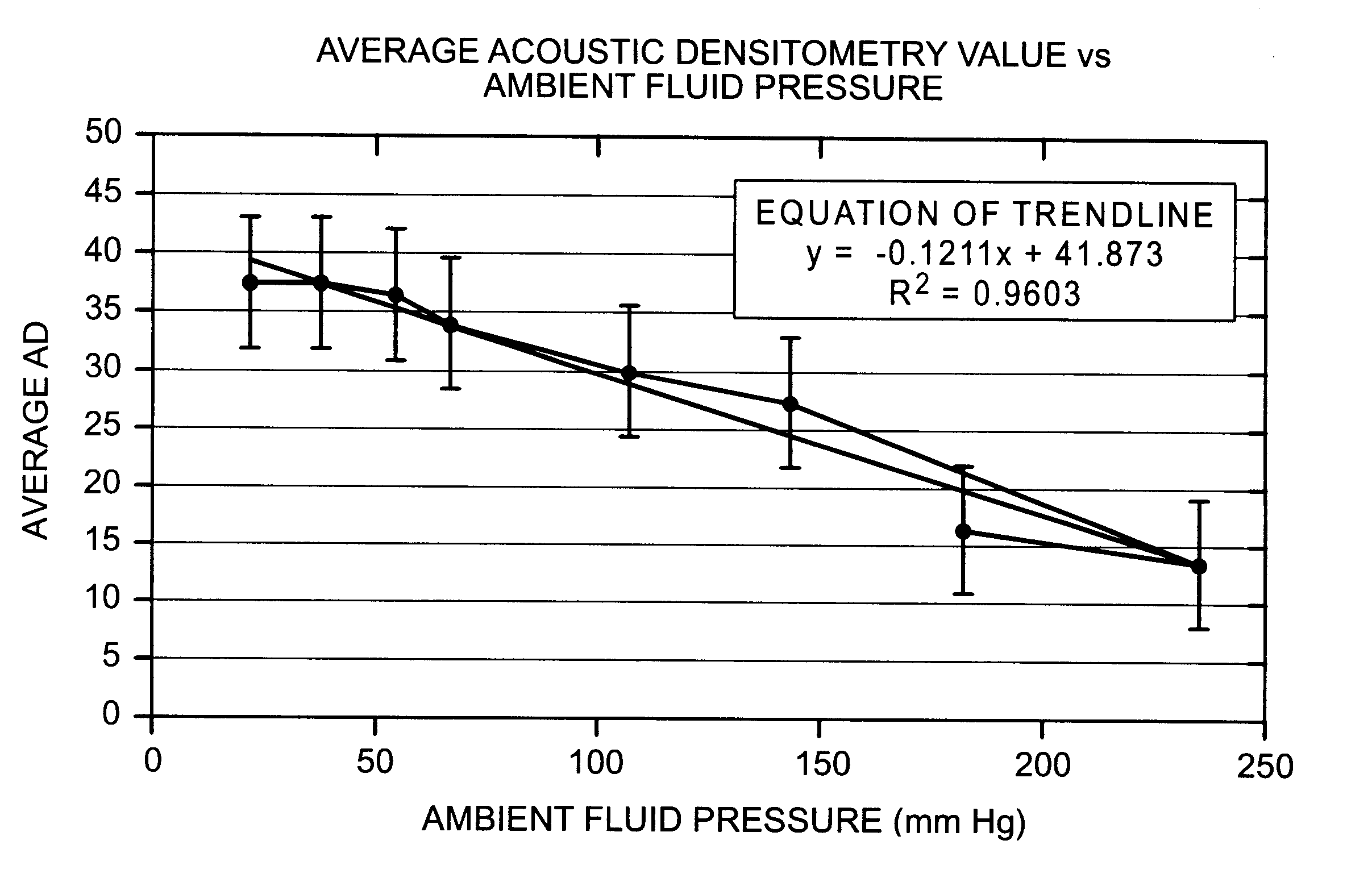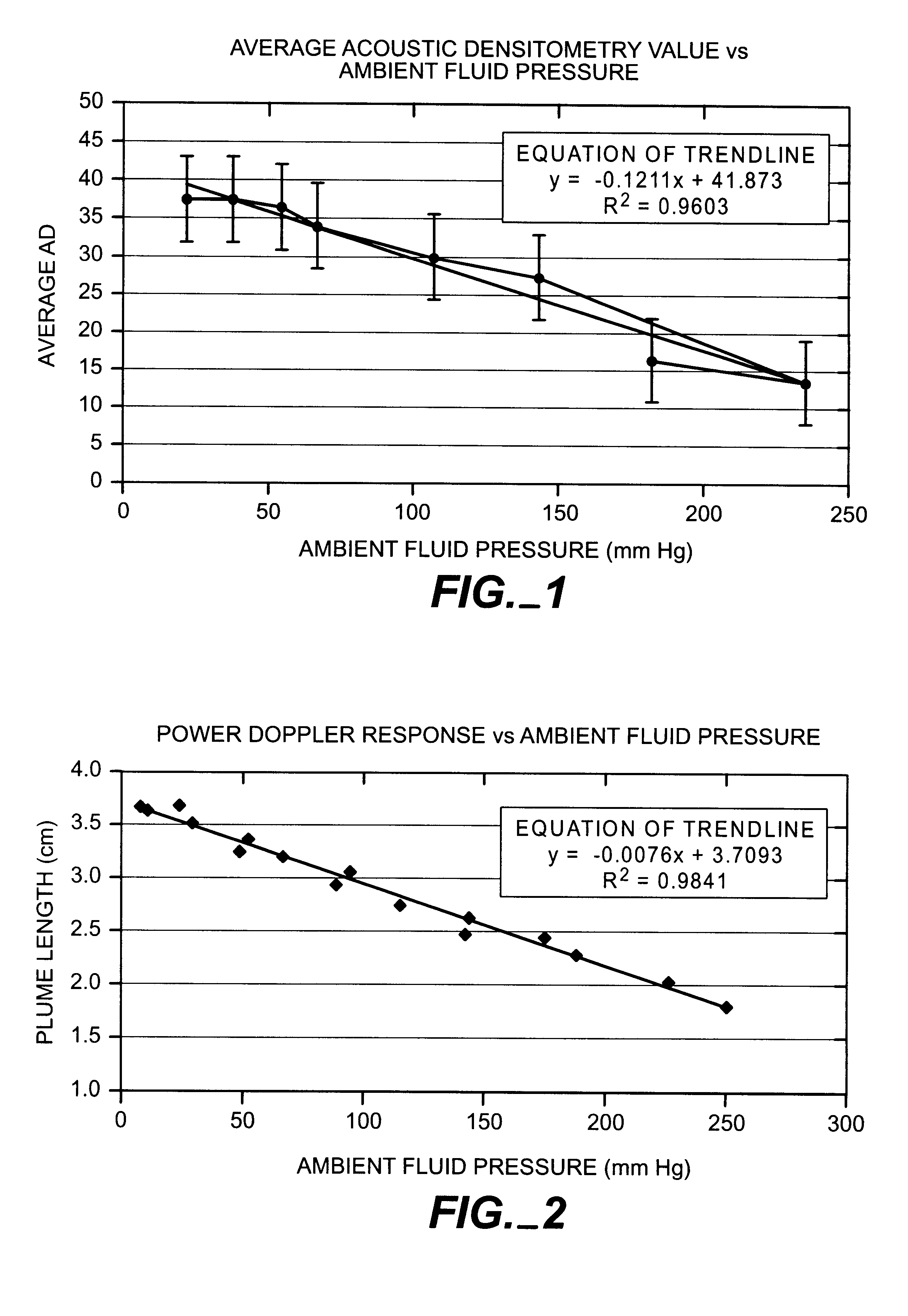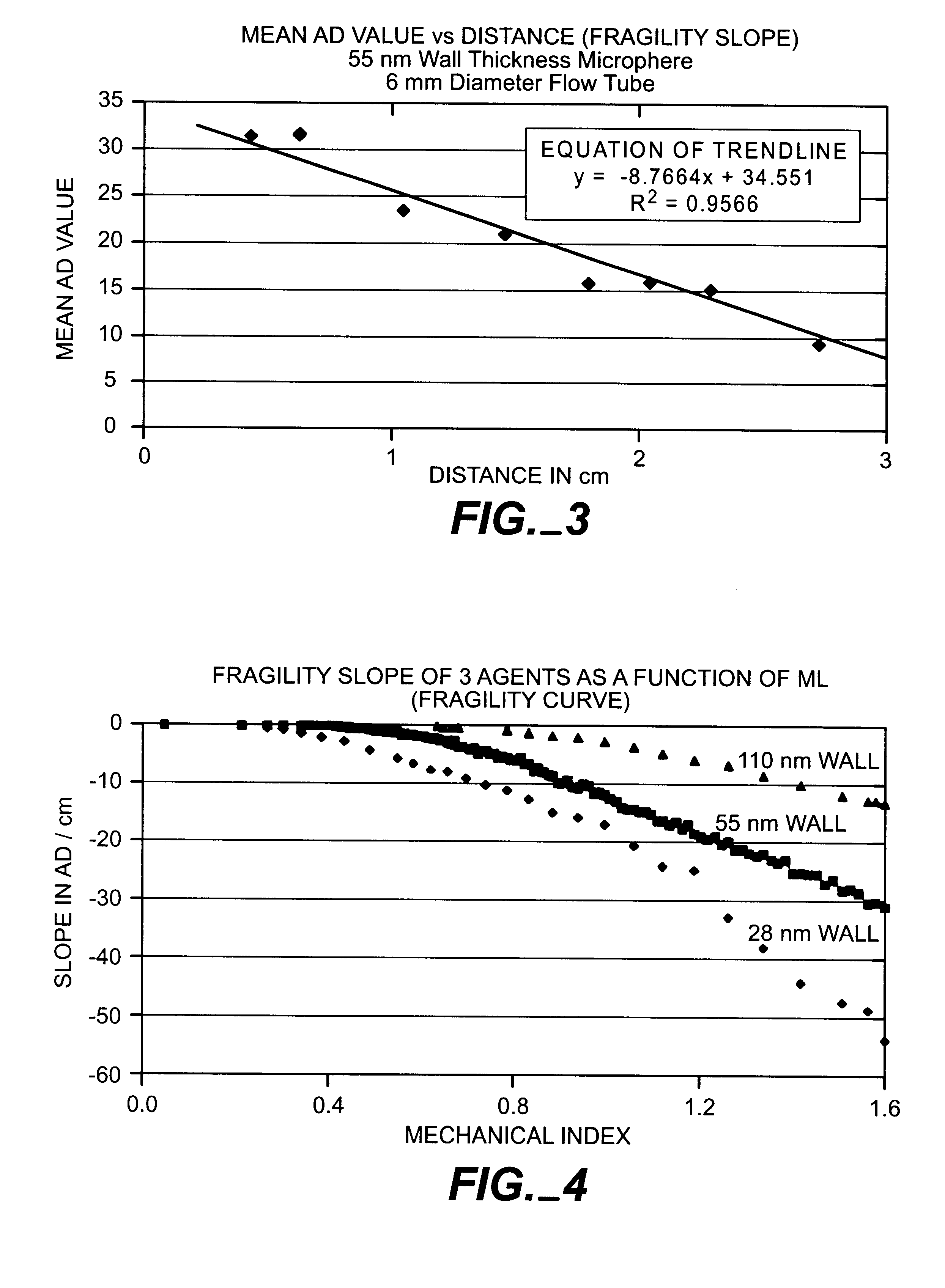Method to measure ambient fluid pressure
- Summary
- Abstract
- Description
- Claims
- Application Information
AI Technical Summary
Problems solved by technology
Method used
Image
Examples
example 2
Hewlett Packard SONOS 5500 ultrasound scanner was used in conjunction with a an ATS Laboratories, Model 524 Doppler Flow Phantom. The setup was essentially the same as Example 1. However, the scanner was set up in the Angio (Power Doppler or Doppler decorrelation) mode. In this mode, decorrelation events as determined by Doppler signal processing above a preset threshold are displayed on the monitor of the ultrasound scanner. The flow phantom consists of a housing filled with an elastomer which is designed to mimic the attenuation of living tissue and has four flow channels of 2, 4, 6, & 8 mm diameter respectively running through it. The 6 mm diameter channel of the flow phantom was chosen. The sector scan transducer was oriented along the centerline of the flow tube. When operated in the Angio mode and when microbubbles are present in the flow tube of the phantom, a colored plume derived from the decorrelation events is displayed on the monitor. The plume corresponds to the disrupt...
example 3
The set-up as presented in Example 2 above was used with the exception that the flow phantom was exchanged for a 6.5 cm diameter by 7.6 cm high acrylic cylindrical phantom chamber with a sealed top and bottom. A magnetic stirring bar was placed in the chamber and the chamber filled completely with de-gassed water. Two ports with luer lock syringe fittings are present to allow connection to the chamber. One port is connected to the pressure transducer, and the other port connected through a 3-way valve to a pressurizing syringe and a sample injection syringe. The S4 transducer of the HP 5500 scanner was placed in a water-filled well on the top of the chamber, imaging directly downward through a thin acrylic cover. The HP SONOS 5500 was run in Angio mode and in B-mode Harmonic. The transducer focus was set at 4 cm in depth, near the mid chamber position. A diluted sample of gas filled, dual walled microbubbles (described in Example 8) was injected into the chamber with the pressure tr...
example 4
Using the set-up with the HP SONOS 5500 and Doppler Flow Phantom as detailed in Example 2 above, a test was performed to determine the variations in fragility thresholds and their relationship to ambient pressure of microbubbles fabricated with differing wall thickness. Three samples of microbubbles (described in Example 8) were fabricated with polylactide inner walls of thickness approximately 28, 55 and 110 nm respectively. The samples were interrogated using B-mode Harmonic imaging at 1.8 MHz send and 3.6 MHz receive frequencies. Using the AD function, an ROI was placed at the input end of the image of the flow channel and densitometry readings taken at each increment. The ROI was moved laterally, in increments along the flow direction and readings taken. The resultant graph, FIG. 3, shows the exemplary results for one sample (55 nm thickness) as a function of mean AD value versus distance in centimeters along the flow channel. The slope of this line is called the Fragility Slope...
PUM
 Login to View More
Login to View More Abstract
Description
Claims
Application Information
 Login to View More
Login to View More - R&D
- Intellectual Property
- Life Sciences
- Materials
- Tech Scout
- Unparalleled Data Quality
- Higher Quality Content
- 60% Fewer Hallucinations
Browse by: Latest US Patents, China's latest patents, Technical Efficacy Thesaurus, Application Domain, Technology Topic, Popular Technical Reports.
© 2025 PatSnap. All rights reserved.Legal|Privacy policy|Modern Slavery Act Transparency Statement|Sitemap|About US| Contact US: help@patsnap.com



